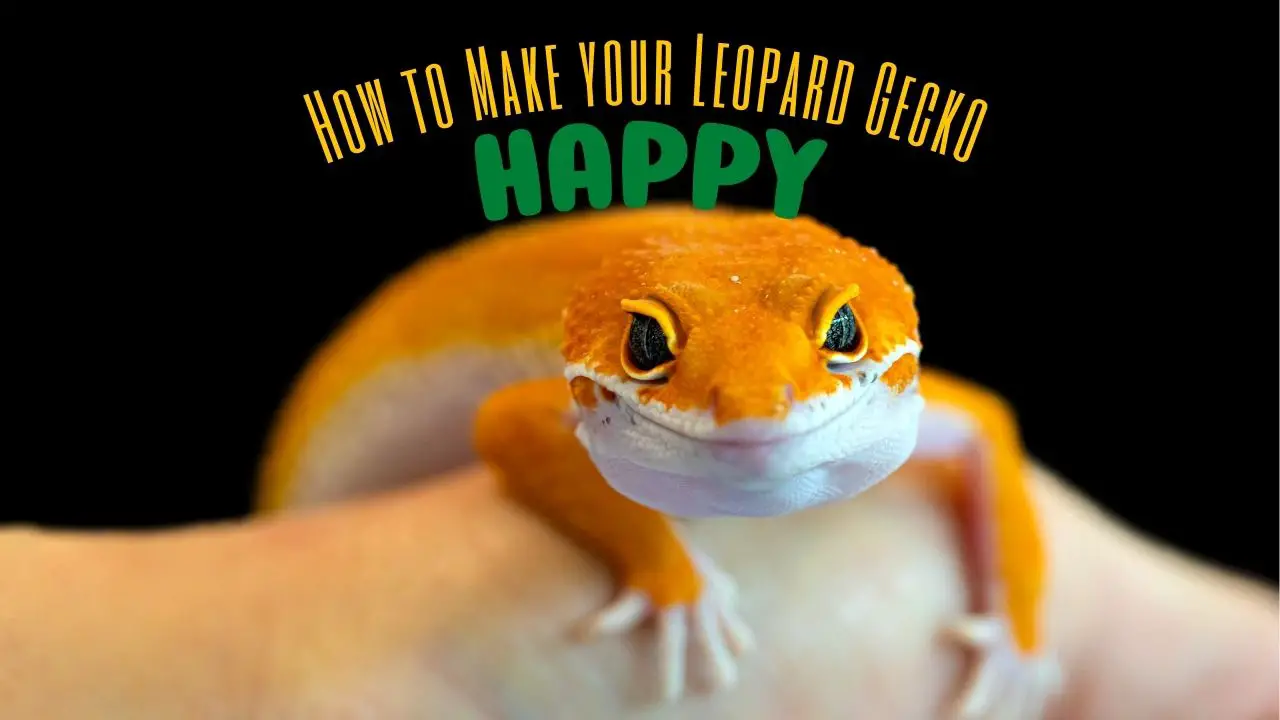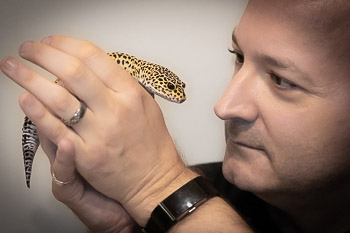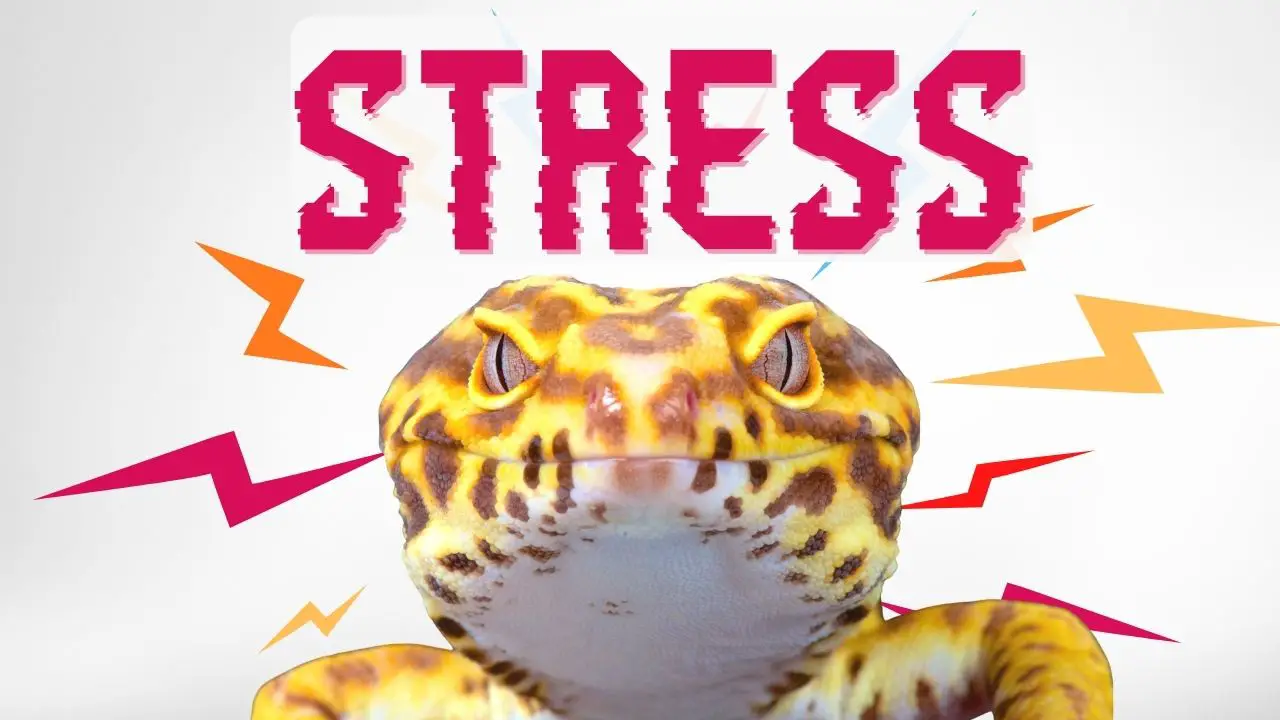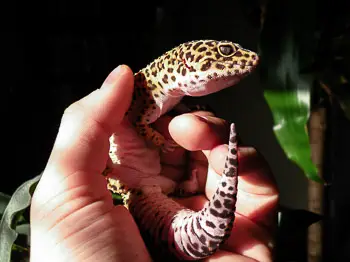Leopard geckos are one of the most popular pets available in the reptile world. They make excellent pets due to their small size, beautiful coloring, and friendly nature. However, despite their popularity, there are many things about these lizards that some leopard gecko owners don’t understand.
Even though they have simple needs, leopard geckos can become stressed and unhappy when not receiving proper care. To make your leopard gecko happy, you’ll need to provide the proper environment, diet, and attention.
Proper Environment
Meeting a creature’s basic needs is the first step to happiness. When we’re not spending every moment worried about surviving, we can start to relax. The same is true for our pets. Make sure you’re providing for your pet’s needs and its tank is safe and secure.
Temperatures for Leopard Geckos
Reptiles are cold blooded, meaning their body temperature is determined by their environment. To be a responsible pet owner, it’s up to you to provide the temperatures your gecko needs to thrive. Leopard geckos come from desert regions and need a temperature between 80 °F (27 °C) and 90 °F (32 °C) to feel comfortable.
Related Post: Best Leopard Gecko Heat Sources
Hot and Cool Side
Now that you know what temperature a healthy gecko needs, let’s take it to the next step. It’s not as simple as heating your tank to a temperature somewhere in that range. Your leopard gecko enclosure needs a temperature gradient.
This means there should be a cooler side of the tank at the lower end of the temperature range and a warmer side that stays at the upper end of the temperature range. This way, your gecko can move to where it’s most comfortable at the time and help control its body heat.
Places to Hide and Sleep
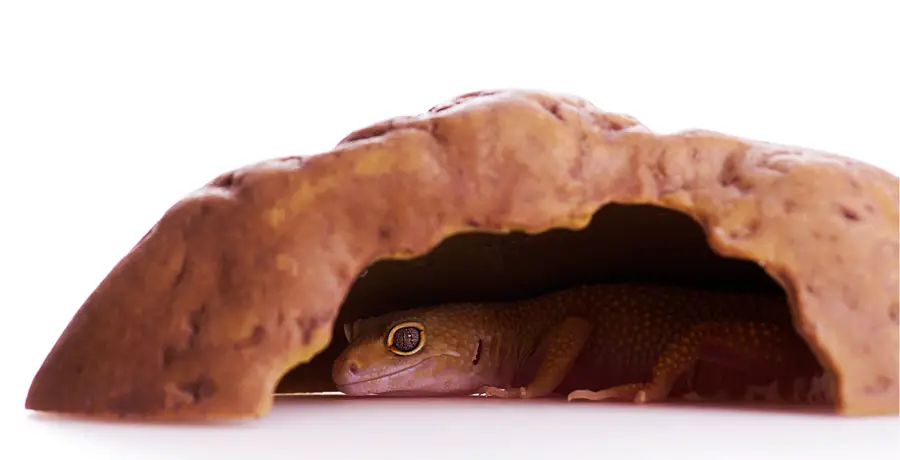
Of course, you’ve set up an awesome habitat, and you know your gecko is perfectly safe inside. But it doesn’t know it’s safe. It’s still a wild creature and needs to feel secure and protected. It needs someplace to hide and sleep.
Make sure to provide a hiding place at both sides of the enclosure. This way, your pet leopard gecko will have a warm spot and a cool spot to sleep and hang out.
Lighting for leopard geckos
Leopard geckos are most active between dusk and dawn (contrary to popular belief, they are crepuscular, not nocturnal), so won’t be out and about much in the light. That said, you should provide lighting that simulates the change between day and night so your leopard gecko can settle into a healthy sleep cycle.
You can read more about heat mats, lighting, hides, and tank setup in our gear guide. To make sure you have the basics covered, check out our post on the essential things your leopard gecko needs in its tank.
Does My Leopard Gecko Need a Friend?
Probably not. Leopard geckos, in their natural habitat, are not incredibly social creatures. Quite the opposite. Most often, you’re best off with a single leopard gecko per tank.
For more on the topic, check out our articles on leopard gecko tank mates and leopard geckos being kept together.
Give it attention
Since pet reptiles are usually enclosed in tanks, they can be out of sight out of mind. It may seem obvious, but please don’t ignore your pet! That said, make sure you do so with proper handling.
Don’t spook it
As with any animal, you want to approach it with confidence and calm. Avoid fast or sudden movements that may scare it. You want to take the time and exercise patience to build trust.
Read more about handling tips and bonding with your gecko.
Follow its lead
If your leopard gecko is actively hiding or evading your attempts to touch or pick it up, you should let it alone. If you handle your pet when it’s relaxed and comfortable, you’ll both be much happier.
Let it follow your lead
Be calm and confident (especially when your hand is in the tank or you are trying to pick up your gecko), and your gecko will sense that. No one feels relaxed around someone who is jumpy and jittery. Jerky movements will put almost any animal on alert.
If you are calm and non-threatening, your gecko is likely to be calmer as well.
Respect its Needs
This may be common sense, though is a mistake many owners make. If your pet is scared and hiding, don’t force it out or corner it. Give it the space it needs to feel comfortable.
Similarly, acknowledge your gecko probably won’t be up and about during the day. Let it sleep. If you wouldn’t appreciate someone waking you up from a sound sleep, your pet probably won’t either. Spend time with it when it’s naturally awake.
Also, make sure it has a clean environment. Scoop the poop. Remove uneaten food items (or make sure insects have a food dish they cannot climb out of.) Remove pieces of shed skin. Leopard geckos are fairly low maintenance, so it’s not hard to keep a clean enclosure.
Proper feeding
A happy leopard gecko is not only well fed, it also has good nutrition. It’s not as simple as dropping some food in the tank and calling it a day. You want to make sure you provide a variety of live, gut loaded insects that your leopard gecko enjoys.
Crickets, mealworms, super worms, and dubia roaches are staples of a good diet, though your leopard gecko may prefer some kinds of insects as opposed to others.
I’ve yet to find a leopard gecko that doesn’t *love* wax worms! Though wax worms will certainly make a gecko happy, these should be given sparingly as a treat. Wax worms are high in fat and shouldn’t be a primary source of food.
Don’t forget to make sure your gecko has a bowl of fresh water.
Calcium supplements are also recommended, especially for juvenile geckos and breeding females.
Read more about what and how often to feed your gecko here.
Wrap Up – How to make your leopard gecko happy and healthy
If you’re looking for signs of unhappiness, read our full post on leopard geckos and stress. Health issues will also lead to an unhappy leopard gecko. Check our post to know the signs if your leopard gecko is sick.

